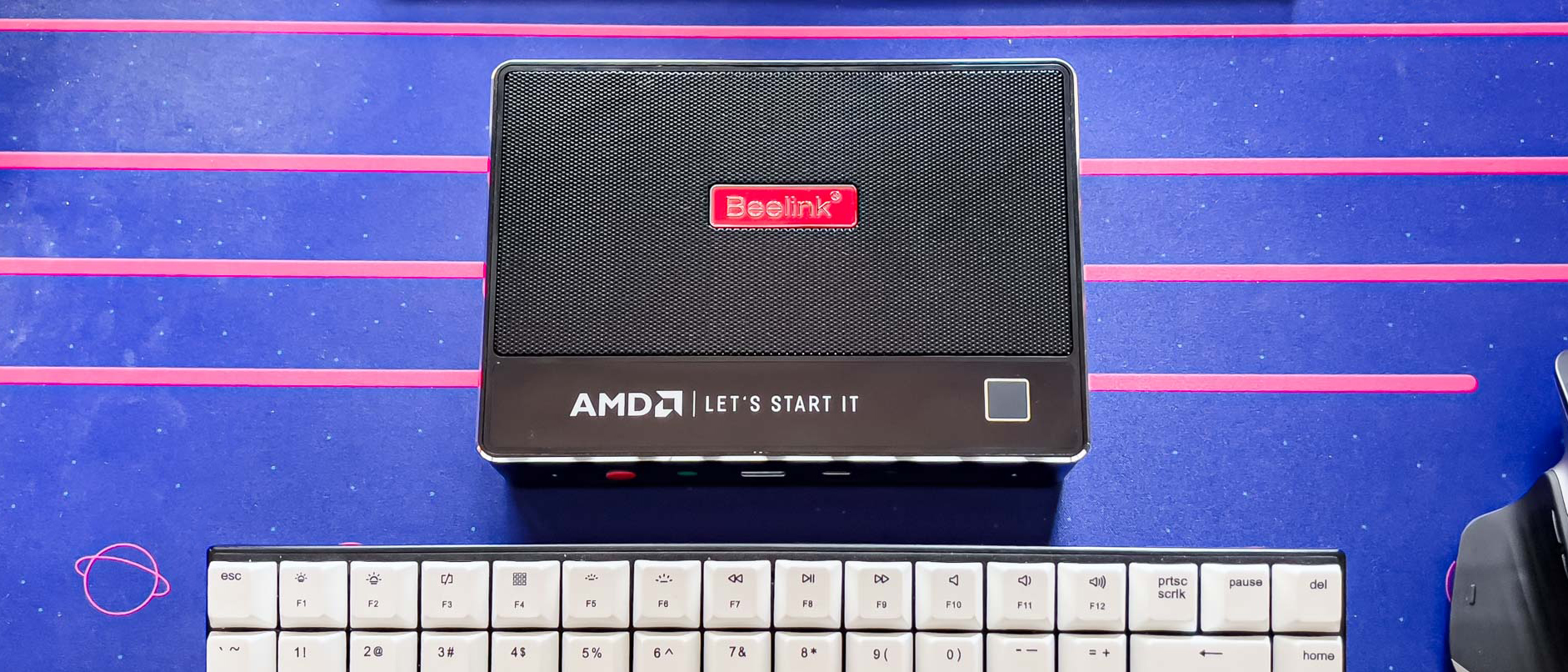Tom's Guide Verdict
The Beelink GTR5, powered by a Ryzen 9 5900HX, can perform basically any desktop task you need outside of heavy gaming. Even that isn’t too far off the mark thanks to the onboard Vega 8 graphics. The GTR5 is a sub-$800 mini PC that is well worth your consideration.
Pros
- +
Superb performance
- +
Excellent value
- +
Plenty of expansion options
- +
Dual 2.5GbE LAN ports
- +
Small footprint
Cons
- -
Fans can get loud under load
- -
Logos and buttons look out of place
- -
Mounting bracket seems suspect
Why you can trust Tom's Guide
Price: Starting at $779
OS: Windows 11 Pro
CPU: Ryzen 9 5900HX
RAM: 32GB, 64GB
Storage: 500GB, 1TB
GPU: Radeon RX Vega 8
Ports: 3 x USB 3.0, 2 x USB 2.0, 1 x USB-C, 3.5mm audio jack, 2 x RJ-45 2.5Gb Ethernet, 1 x HDMI, 1 x DisplayPort, fingerprint reader
Expansion: Up to 64GB DDR4 SODIMM, up to 2TB NVMe, up to 2TB M.2 SATA, up to 2TB 2.5-inch SATA
Connectivity: Wi-Fi 6E, Bluetooth 5.0
Size: 6.6 x 4.7 x 1.5 inches (168 x 120 x 39 mm)
Weight: 1.4 pounds (649 g)
The Beelink GTR5 really makes the case for mini PCs, helping make 2022 the year of the mini PC. It packs a ton of horsepower into a small chassis, with room for more storage and support for a lot of RAM. Thanks to its Ryzen 9 5900HX processor, the GTR5 flies through essentially every task you could want. And the onboard Vega 8 GPU lets you dabble in some emulation or light 720p/1080p gaming.
Costing hundreds less than a comparable NUC, the GTR5 perfectly exemplifies what I love about mini PCs. It does everything you could want in a desktop while taking up very little space. You can even mount it to the wall or the back of your monitor with the included bracket, offering an extremely minimal desk setup if you use wireless peripherals.
In this Beelink GTR5 review, I’ll explain why I think this is the mini PC to get if you need more power than mid-range alternatives.
Beelink GTR5 review: Price and availability
The Beelink GTR5 starts at $779 for the model with a 500GB NVMe SSD and 32GB of dual-channel DDR4 SODIMM RAM clocked at 3200MHz. For $999, you can upgrade to 64GB of RAM and a 1TB SSD. While available on Amazon, Beelink sells the GTR5 for lower prices.
Regardless of configuration, you get the same Ryzen 9 5900HX mobile processor, which comes equipped with Radeon Vega 8 graphics. The physical design of the GTR5, including the port selection, also remains the same.
As for spec comparisons, the GTR5 goes head-to-head with the Dell OptiPlex 7090 Ultra. That mini PC sports an i7-1185G7 CPU, which, as you’ll see below, is behind the Ryzen 9 5900HX. The Dell runs about $1,732 for 16GB of RAM and 256GB of storage, though it was on sale for $831 at time of writing.
If you want a Mac, the Mac Mini M1 is also quite comparable in terms of performance, which starts at $699. It’s two years old at this point and due for a refresh (rumored to arrive later this year), but it still packs a punch.
Get instant access to breaking news, the hottest reviews, great deals and helpful tips.
Beelink GTR5 review: Design
In the strictest sense, the GTR5 doesn’t try to stand out. It’s a black rectangular cuboid with the sides and most of the lid well-ventilated. The top features a red Beelink badge and some backlit AMD branding, plus the fingerprint sensor. Both sides sport “GR9” logos, and I’m not entirely sure what they mean considering that the model line is GTR. Regardless, the amount of iconography here mars an otherwise subtle aesthetic.
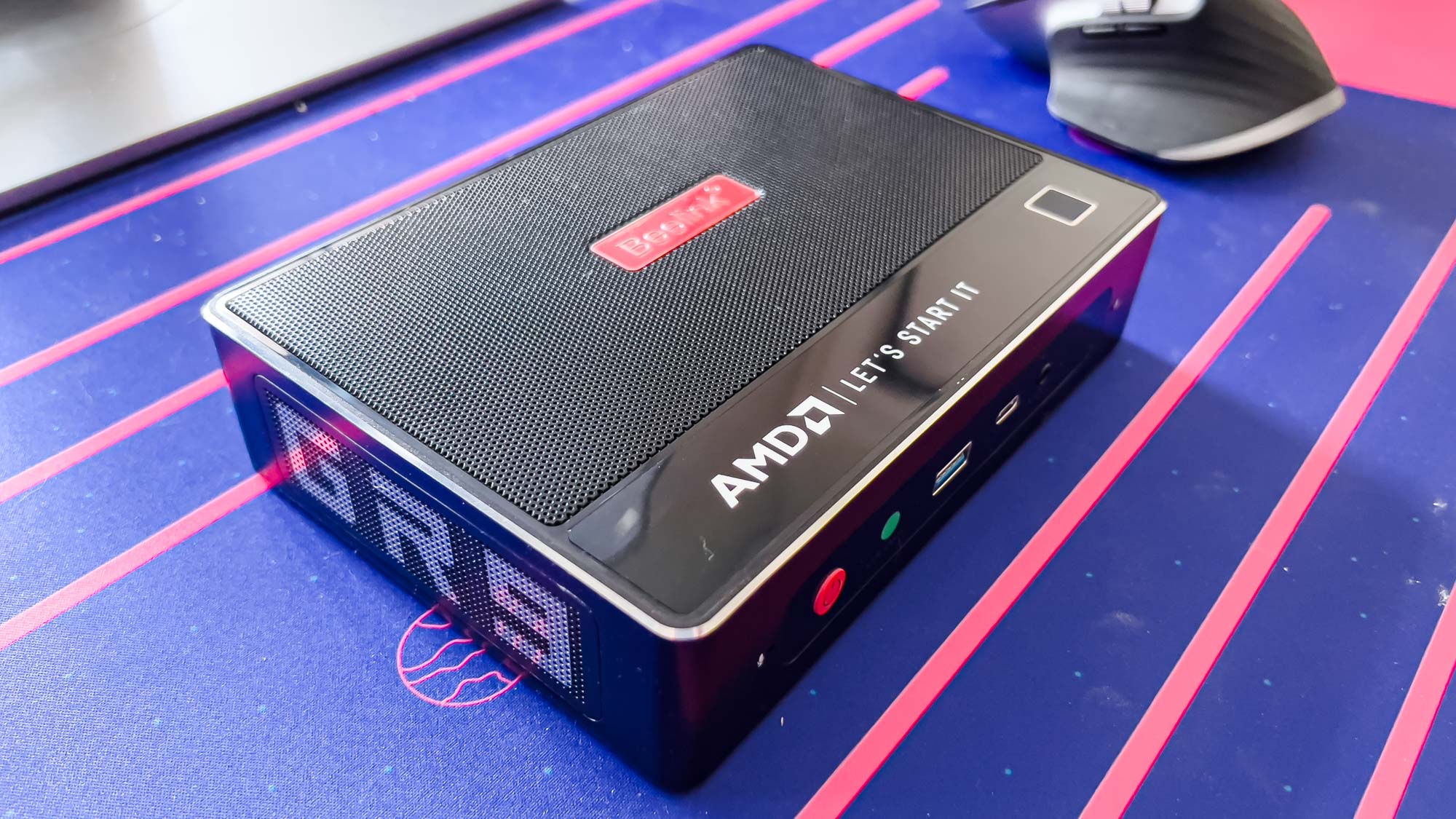
I can’t say I’m a fan of the jarringly out of place red power and green clear CMOS buttons, either, which further degrade the GTR5’s clean look. I’m not sure why Beelink would opt for such brightly colored options here. They look out of place, even with the other logos and branding.
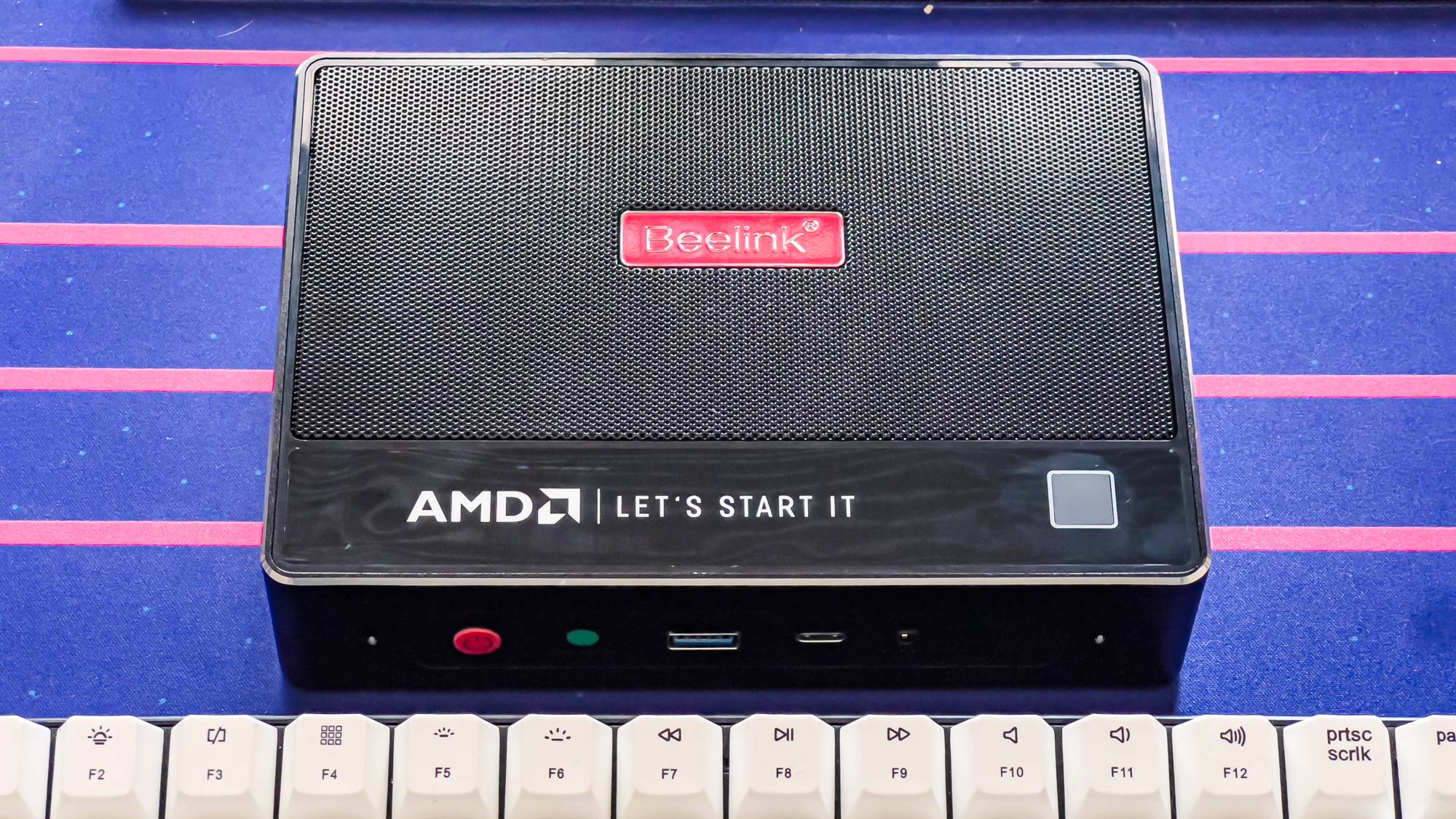
At 6.6 x 4.7 inches, the GTR5 takes up very little space on my desk. And at just 1.5 inches thick, it sits very low. It’s also a very light 1.4 pounds, which is good considering the mounting solution. The included bracket doesn’t feel very sturdy, especially since it attaches via two small screws to the GTR5 near the edge of the device. It would not leave me with much confidence were I to stick this to the back of my monitor or to my wall, and I certainly wouldn’t try it mounted under my desk.
Beelink GTR5 review: Ports and upgradeability
On the front, you’ll find the power button, clear CMOS button, a USB 3.0 port, a USB-C port, and the 3.5mm headphone/mic jack. Around back, the GTR5 has more ventilation. For rear ports, the GTR5 has two more USB 3.0, two USB 2.0, an HDMI, a DisplayPort, and two 2.5Gb Ethernet. There’s also the barrel jack for the 90W power supply.
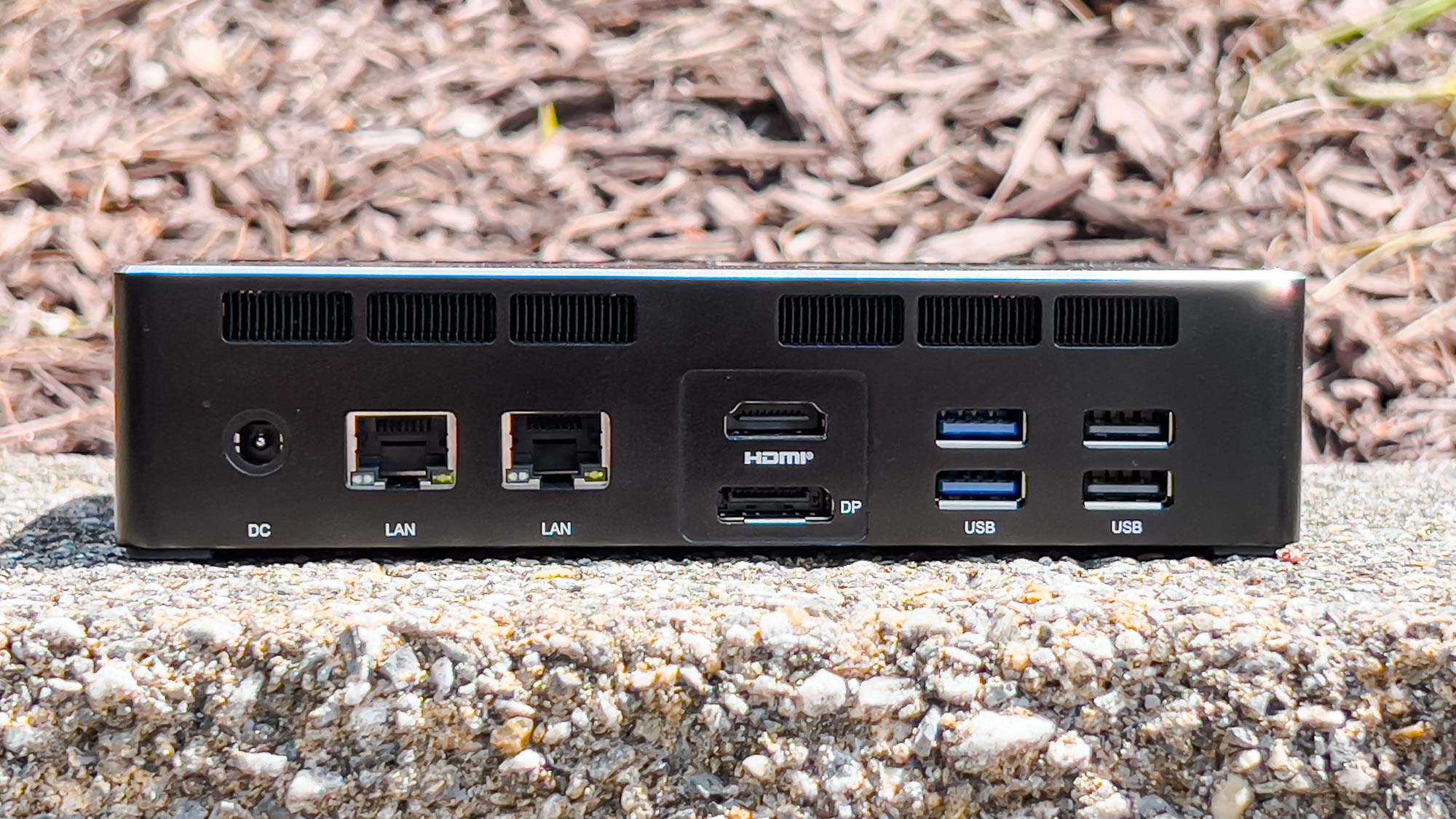
Inside, the GTR5 uses two SODIMM RAM slots. Whatever model you choose, you get dual channel memory. The PC supports up to 64GB of total RAM. The M.2 2280 NVMe slot can hold up to a 2TB SSD. There’s also room for another M.2 2280 drive, but only SATA. If you need even more storage, the GTR5 can house a 2.5-inch disk, going up to 2TB.

I love that the GTR5 has not just one but two 2.5GbE LAN ports. If your networking hardware can support it, this will drastically improve the connection speed. While most home internet plans won’t exceed a gigabit, you can count on 2.5 gigabits of transfer speed between devices on your network. For me, this is excellent for transferring large files to and from my NAS.
Beelink GTR5 review: Performance
With a Ryzen 9 5900HX, the GTR5 has a ton of power. Granted, this processor is a mobile chip, but it gets the job done with eight cores and 16 threads. The base clock is 3.3GHz with a boost speed of 4.6GHz. The GTR5 comes with either 32GB or 64GB of DDR4 SODIMM RAM clocked at 3200MHz.
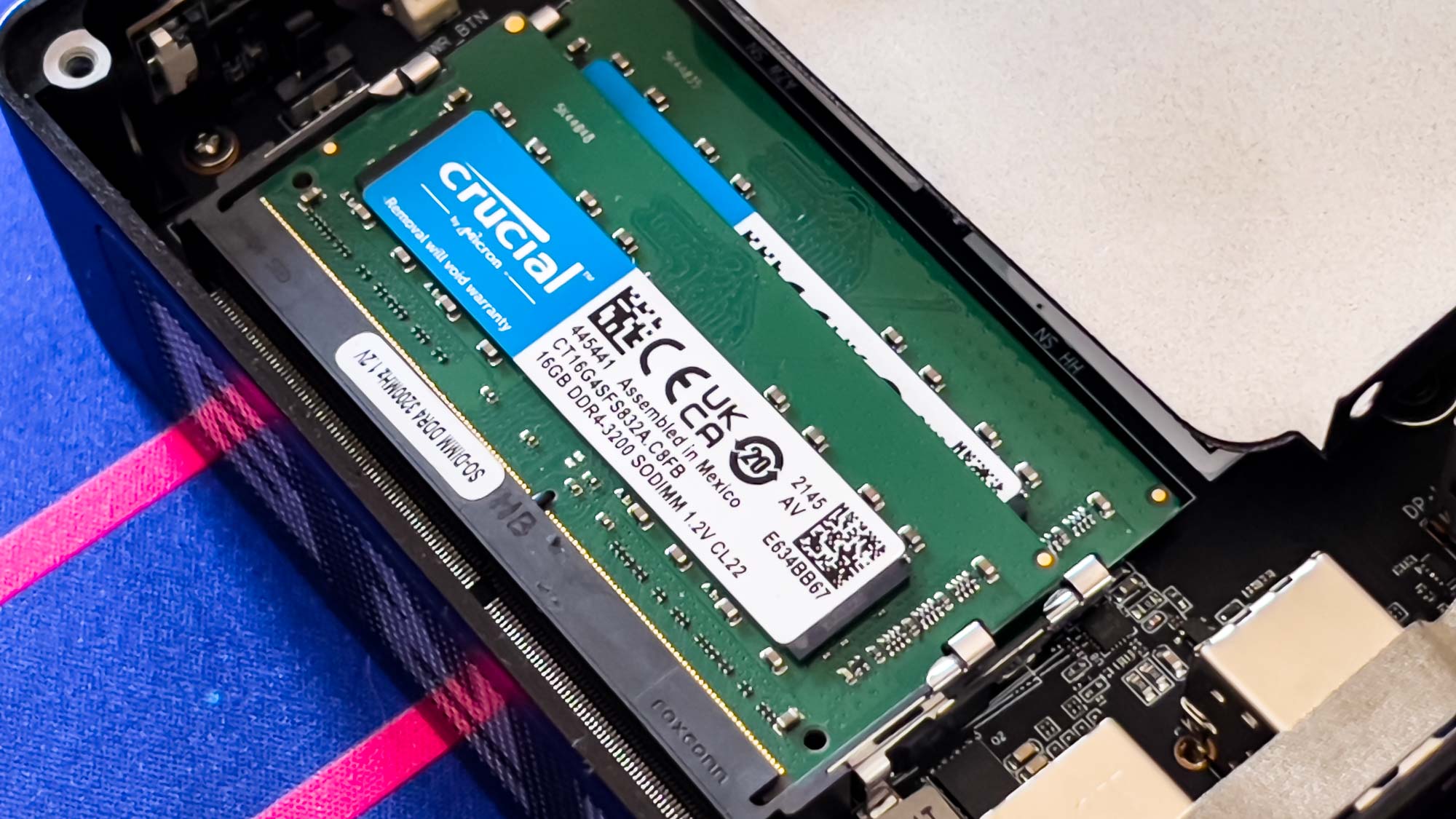
For the GPU, the 5900HX uses a Vega 8 chip, meaning it has eight cores that go up to 2100MHZ. Here’s how the GTR5 fared in our suite of benchmarks.
| Row 0 - Cell 0 | Beelink GTR5 | Dell OptiPlex 7090 Ultra | Mac Mini M1 |
| CPU | Ryzen 9 5900HX | i7-1185G7 | M1 |
| Geekbench 5 (single-core / multi-core) | 1557 / 7828 | 1575 / 4999 | 1744 / 7683 |
| 25GB file transfer | 508 MBps | 813 MBps | N/A |
| Handbrake (Mins:Secs) | 6:40 | 13:47 | 8:11 |
| 3DMark Fire Strike | 4000 | 3542 | N/A |
| 3DMark Time Spy | 1587 | 1416 | N/A |
| Civilization VI (FPS) | 35 (1080p) / 17 (4K) | 18 (1080p) / 10 (4K) | 32 (1080p) / 17 (4K) |
The GTR5 did very well, outperforming even the Mac Mini M1. It crushed the Dell OptiPlex 7090 Ultra with its i7-1185G7 in all but the 25GB file copy test. That, however, mostly comes down to the SSD and not the CPU. It performed the Handbrake transcoding test in less than half the time of the OptiPlex, also beating the Mac Mini M1.
The GTR5 can also do some light gaming thanks to that Vega GPU. It hit a very playable 35 frames per second in the Civilization VI benchmark at 1080p. It also scored decently well in Fire Strike and Time Spy, beating out the OptiPlex 7090 Ultra and its Iris Xe integrated GPU. Simply put, you can probably get away with a decent amount of games at 720p or 1080p with low to medium settings (especially if the game supports AMD’s FSR technology).
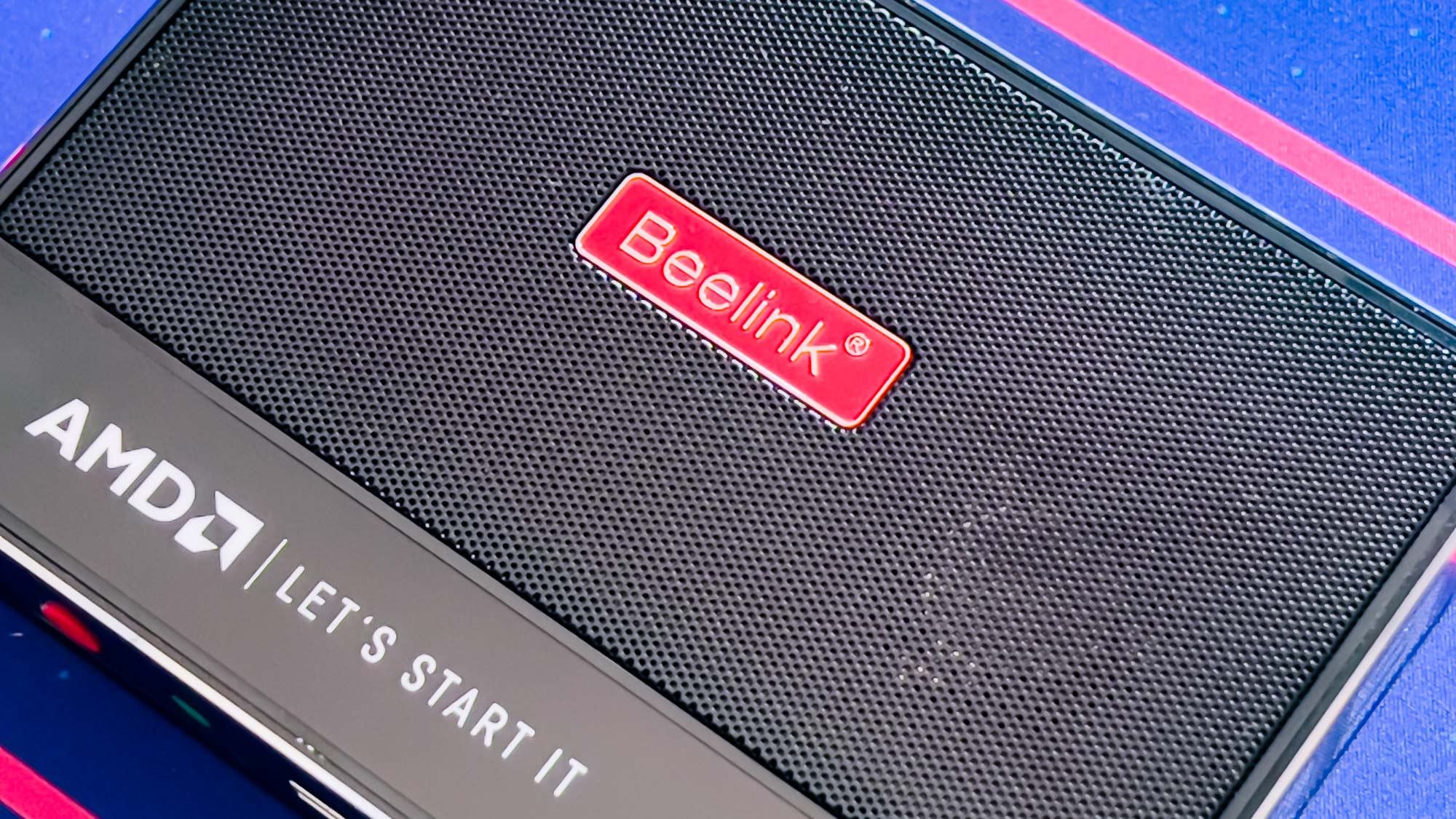
In my use, I barely stressed the GTR5. I was able to play Destiny 2 at 1080p low settings at a passable framerate. Putting this mini PC under load spins up the fans and they can get quite loud. However, for most desktop use cases, the GTR5 is pretty quiet.
Beelink GTR5 review: Software
The GTR5 comes with Windows 11 Pro pre-installed. I expected to find the same amount of bloatware that I’ve seen on the ISO images directly from Microsoft, but the only thing that stood out to me was Minecraft: Education Edition. Considering that the default version of Windows 11 that you get from Microsoft comes with garbage like TikTok, Instagram, Prime Video and Disney+, I found myself pleasantly surprised.
Beelink says you can install other operating systems here, too. The company mentioned Ubuntu Linux specifically, but I had no trouble with Manjaro, Batocera, Pop!_OS or Garuda. The GTR5 flies in Linux thanks to the powerful hardware.
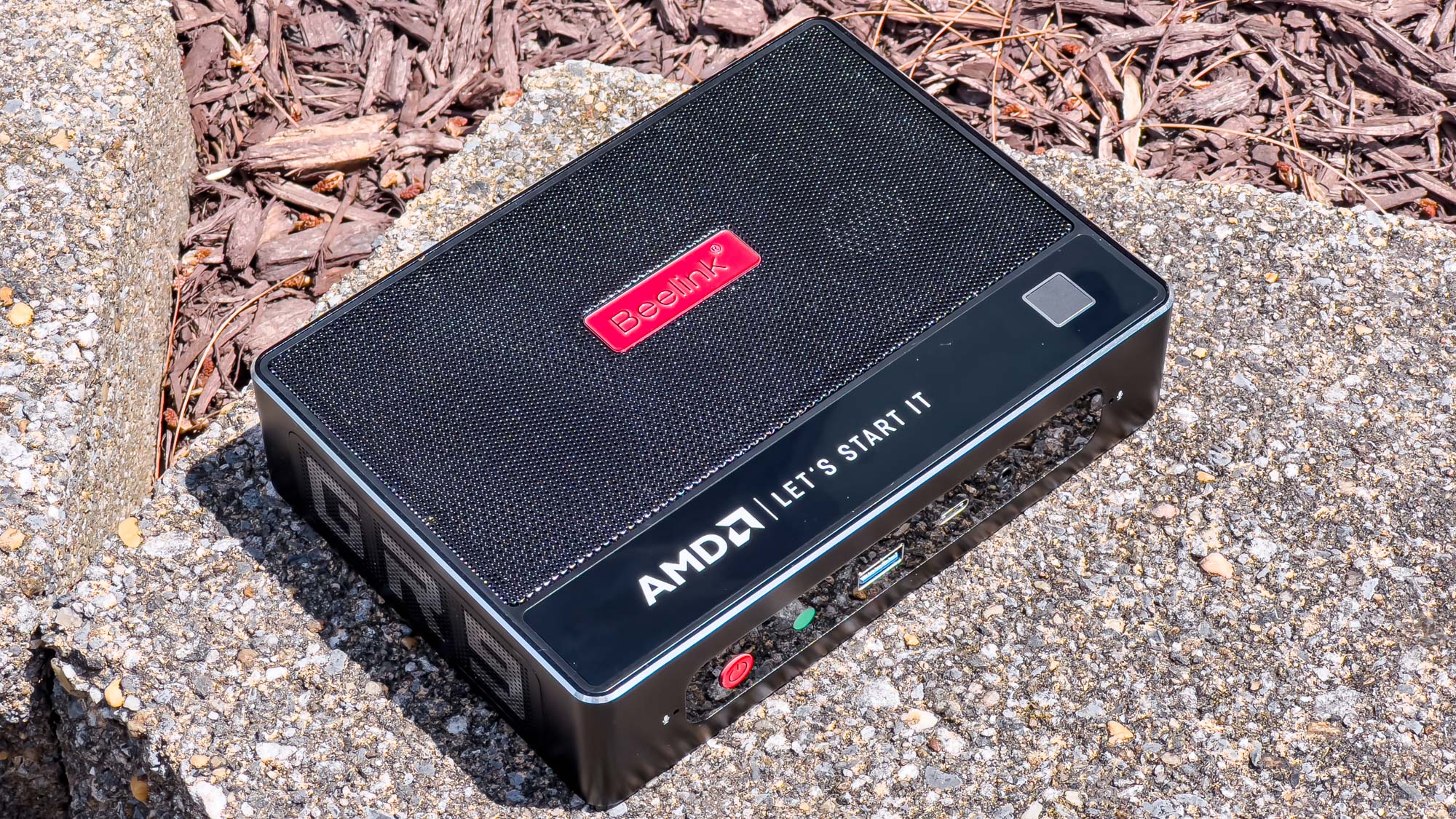
You could also turn the GTR5 into a virtualization host with something like Proxmox. With the high core count and abundance of RAM, you could run quite a few virtual machines. However, that seems to be a bit of a waste of the GTR5’s power. I also thought about installing LibreElec and turning this machine into an HTPC, but that also seems like a waste — LibreElec is better suited for lower-powered devices like ARM- or Celeron-based systems.
Beelink GTR5 review: Verdict
At $779 for the 32GB/500GB model, the GTR5 strikes a hard bargain. You get a top-tier AMD mobile processor, 3200MHz DDR4 RAM and an NVMe SSD with room for two more SATA SSDs (or a 2.5-inch HDD). You typically see the Ryzen 9 5900HX in gaming laptops, often equipped with very powerful dedicated GPUs. The GTR5 makes do with the 5900HX’s integrated GPU to great effect.
If you need eight cores and 16 threads and a minimum of 32GB of RAM, the GTR5 is a great little workhorse. If you’re into photo editing and some moderate video editing, this mini PC can do it. Obviously, if your workloads exceed that, you already know that a mini PC like this one won’t meet your workstation needs.
The GTR5 easily earns a spot among the best mini PCs for its sheer power and value. It has so many possible applications, but it also meets basic use cases incredibly well.

Jordan is the Phones Editor for Tom's Guide, covering all things phone-related. He's written about phones for over six years and plans to continue for a long while to come. He loves nothing more than relaxing in his home with a book, game, or his latest personal writing project. Jordan likes finding new things to dive into, from books and games to new mechanical keyboard switches and fun keycap sets. Outside of work, you can find him poring over open-source software and his studies.
